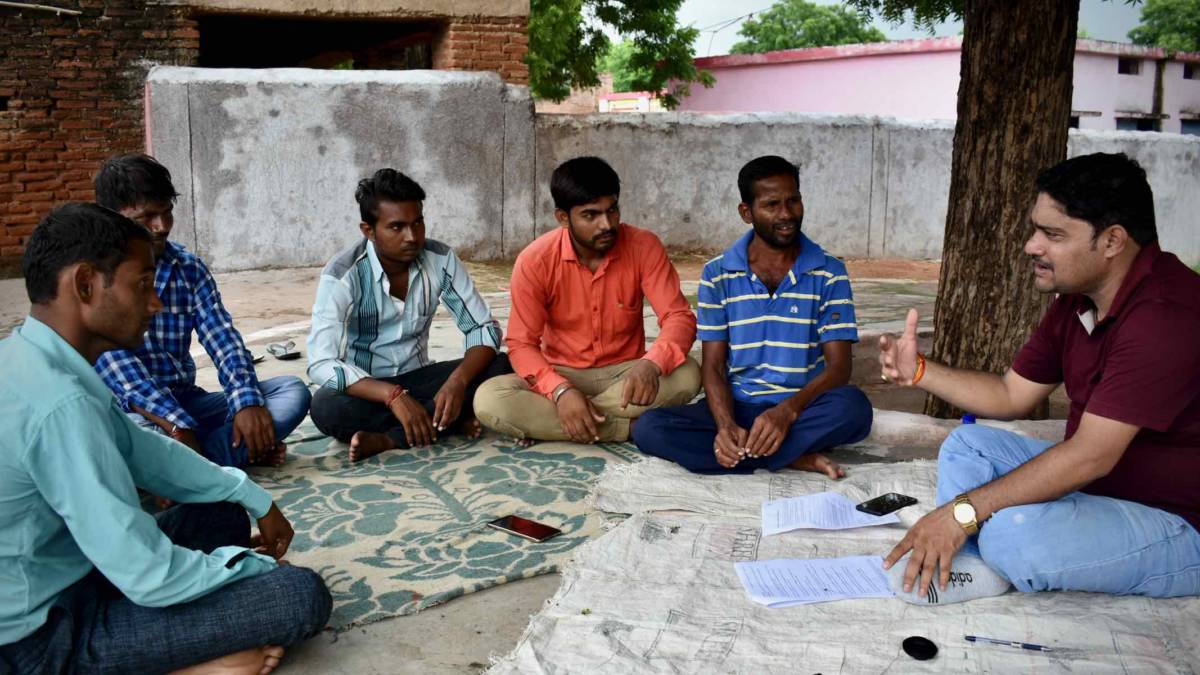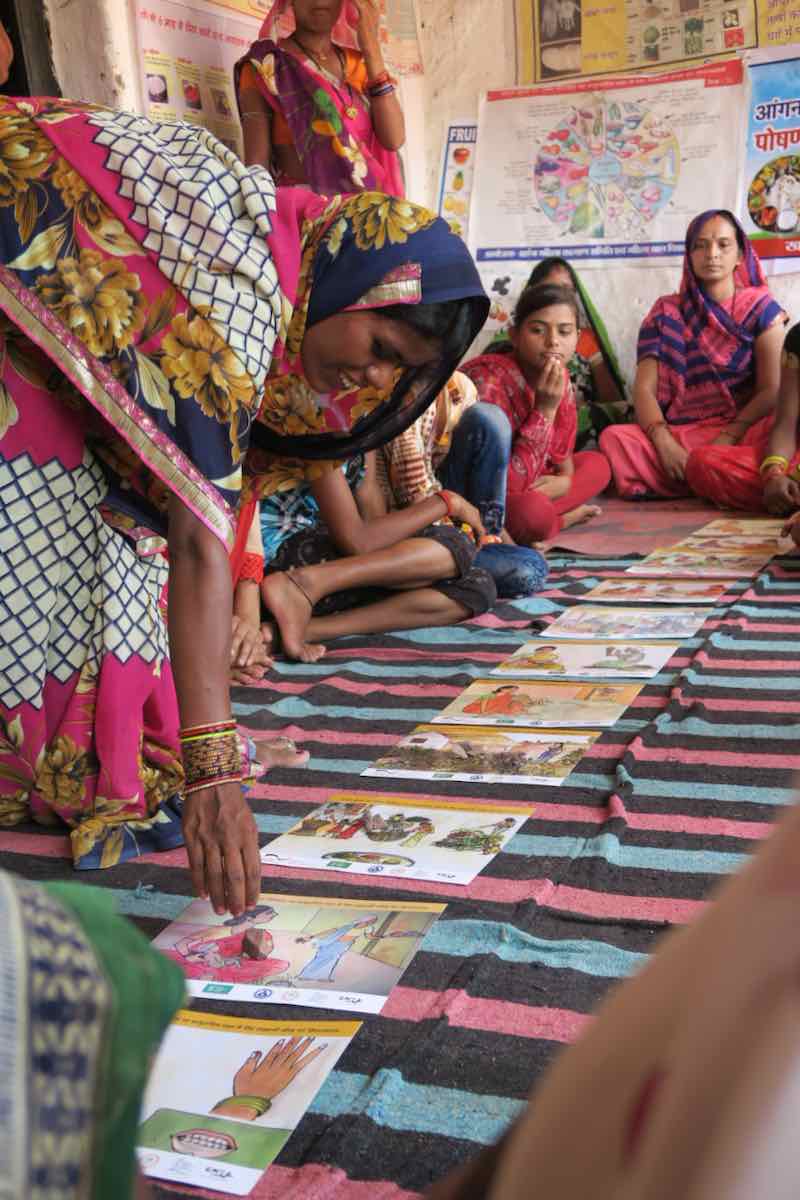How Can We Support Change Processes to Make Projects Succeed?
How Can We Support Change Processes to Make Projects Succeed?
Webinars on social behaviour change attract attendees from 30+ countries

Focus group discussion with fathers during SBC Barrier/Enabler Analysis on improving food and nutrition situation
Photo:© GIZ FaNS India / Archana Sarkar
Photo:© GIZ FaNS India / Archana Sarkar
Working in the development sector, a question we probably all ask ourselves when starting a new project is: How can we support change processes to make projects successful? And how do we facilitate processes of change or more specifically social and behavior change effectively?
Social and behavior change is most often critical for the success of development projects. To understand the importance of social and behavior change you can ask yourself: “Have I ever acted contrary to my knowledge?” If your answer is “yes”, you will realize that awareness-raising and knowledge dissemination is most often not enough to change behaviors — as knowledge is only one of the many drivers of behavior.
Human behavior is determined by a range of personal and external factors – the influence of friends, families or local leaders are often as important as a person’s knowledge or self-confidence. Therefore, understanding people´s perceptions and putting people in the center of our interventions is an important first step. This includes a proper analysis to understand barriers and motivators to change using insights from behavioral science.
Against this background, GIZ in collaboration with the ANH Academy and SNRD Africa prepared a webinar series on SBC for improved agriculture and nutrition. It aims to help integrate SBC effectively into each stage of interventions. During the webinar series, SBC experts and practitioners share their experiences and give useful guidance.
What is social and behavior change all about
Webinar #1
The kick-off webinar gave an overview of why some people don’t act as promoted and provide an essential understanding of social and behavior change. Danielle Chekaraou, the key speaker with twenty years of experience in international development, gave useful tips and resources on how to apply the theoretical knowledge in praxis.
Webinar #2
In the second webinar, we gained knowledge about the key barriers and motivators to practice the promoted behavior. Ann Jimerson explained: « If we select fewer and well-selected behaviors, we are likely to see more change ». We learned how to decide which behaviors should be promoted, how to identify barriers and motivators, and how to use existing resources to make our research easier. Archana Sarkar, working for GIZ´s Global Program Food and Nutrition Security, Enhanced Resilience in India shared her experience in conducting a study to identify the barriers and enablers to improve nutrition. She explained: “We used the identified enablers to our advantage for the implementation of the project”.
Webinar #3
In the third webinar, we could build upon our newly gained knowledge as we learned from social and behaviour change experts from Save the Children how to prepare an social and behaviour strategy, what a good strategy consists of, and what kind of tools help us to implement a successful strategy. Na Oume Habou Ibrahim, from Save the Children, highlighted: ”We have to go to the communities to know their realities, to know their needs and build upon that to elaborate our strategy”.
Webinar #4
The fourth webinar helped to understand the role of “right” communication in social and behaviour change. The key speakers Peter Mitchell, the creative officer of Marketing for Change Co., Meraz Rahman, and Ame Stormer explained the six steps of designing social and behaviour change messages:
- First, we have to find the “right” offer for the target group to communicate the message,
- the second step is the framing of the message: does the message fit the target group´s world view?,
- followed by the next step: context – what is the right time, place or context?,
- fourth the tone of the message: is this how the target group communicates?,
- followed by clarity: how well is the message understood?,
- and the last step to design social and behaviour change messages is the Call to Action – does the target group know implicitly or explicitly what to do?.
- And – pre-testing is key for success!
Webinars #5 and #6
Finally, the fifth and last webinar on Leveraging M&E Systems to improve SBC Program Performance will take place on the 24 November. It will provide practical tips on how M&E systems can help measure the result and improve the quality and overall impact of your social and behaviour change work. We are pleased if you join us for this webinar!
Resources

Nutrition – Participatory Learning and Action meeting for women of reproductive age, facilitated by an Anganwadi worker (village-based social worker). This pebble voting game helps the women to identify causes and set priorities for action on malnutrition.
© GIZ FaNS India / Nadine Bader
© GIZ FaNS India / Nadine Bader
Contact
Julia Goette (Julia.goette@giz.de) and Franzi Kreimeyer (pia.kreimeyer@giz.de)

